One of the biggest things about what makes a home comfortable is its ability to shield us from the wild variability of conditions that Mother Nature can throw at us. After all, no one enjoys shivering through the winter or sweating out the summer indoors (especially with the extremes being exacerbated by Global Warming). In this article, I’ll guide you through the best options you have on how to cool down or heat up your home through the lens of our experiences to make this aspect of homeownership less of a homeowner headache.
How Do Shelters Help With Temperature Regulation?

Ever since I’ve watched survival shows like Naked and Afraid or Alone, I’ve marveled at how important shelter and fire are for human survival. More specifically, these survival priorities dampen the variability of conditions in Nature to be more in line with what your body can live with, especially from a body temperature regulation standpoint.
The human body can only do so much to regulate temperature on its own in an effort to protect its vital organs. For example, it moves blood from your extremities to the vital organs to keep you alive when it’s cold. If the cold gets out-of-hand, then you could have a condition called hypothermia, which is where the body loses heat faster than it can produce. Conversely, the body moves excess heat out of the body in the form of sweat and breath to keep the body from overheating. However, if the heat gets out-of-hand, then you could have a condition called hyperthermia, where the body’s inability to cool down fast enough can cause organ failure.
Therefore, it’s the shelter’s job to help the human body get into the sweet spot of body temperature regulation even in the face of upwards of 90 F (about 32 C) heat or south of 50 F (about 10 C) chilliness. The shelter’s job is enhanced if you can create fire to make up for other basic needs that the shelter alone can’t do.
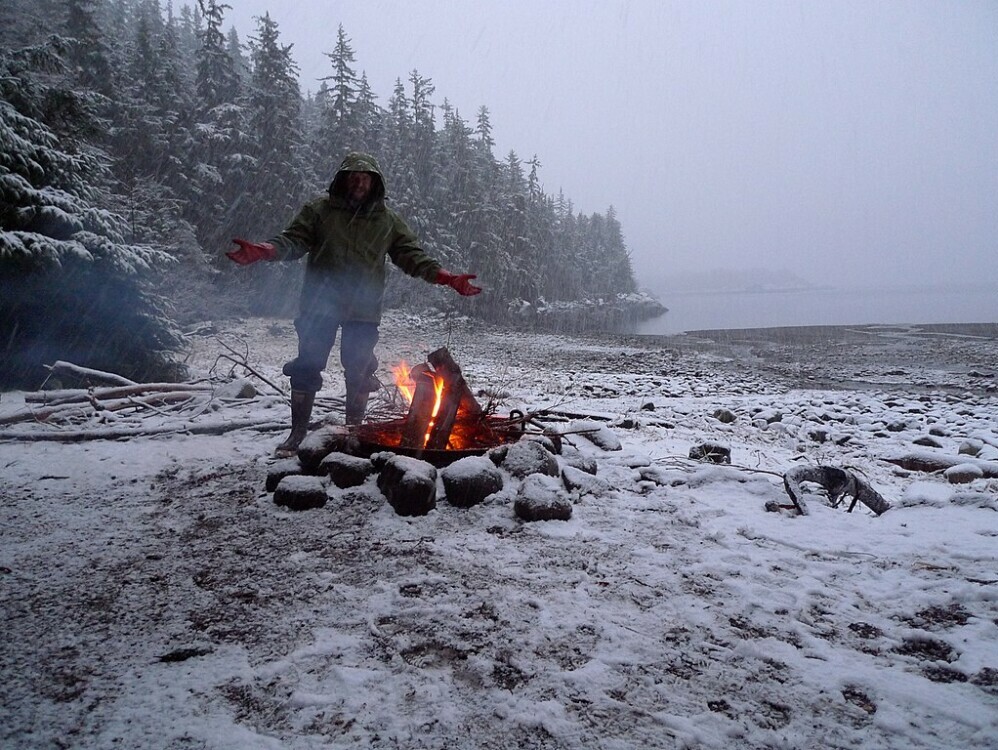
Yet it’s not just temperature alone that matters for your survival and comfort as moisture matters, too. After all, water can both suck heat out of the body or prevent the body from cooling off. Just ask someone shivering in the rain or conversely passing out in a steamy sauna. So the shelter and fire combo must also do a good job at regulating humidity.
Of course, a home (whether it’s a house or apartment) is a more modern take on a shelter and fire combination. In this case, we use technology and modern building materials to regulate out what Nature can throw at us (of which tends to undermine our ability to maintain body temperature).
A well-built home not only keeps the elements at bay (like rain, snow, wind, etc.), but even inside the house, it can help keep the air circulating while having additional means to add heat or cool the air as needed to maintain a high comfort level in the face of such conditions.

That said, these measures come at a cost. For example, you often have to pay up front to have the home built properly or have air conditioning and/or heating systems installed. Then, you have to pay in energy costs to run the heating or air conditioning as needed to make up for whatever the basic structure of the house can’t provide on its own as far as thermal regulation and humidity mitigation are concerned.
So in the following sections, let’s discuss what options you have available for both cooling off or heating up your living space.
Exploring Cooling Solutions to Beat the Heat at Home
Living in Southern California for most of our lives, we’re no strangers to hot temperatures, especially in the Summer. And with Global Warming, our Summers have lengthened into both Spring and Fall (along with the odd Santa Ana Wind-related heat waves in the Winter) while yielding more intense heat waves. Therefore, having cooling solutions to beat the heat is pretty much a must. So we’ll run through what options that we’ve considered to accomplish this, which range from cheap solutions to the more robust but expensive ones.
Fans
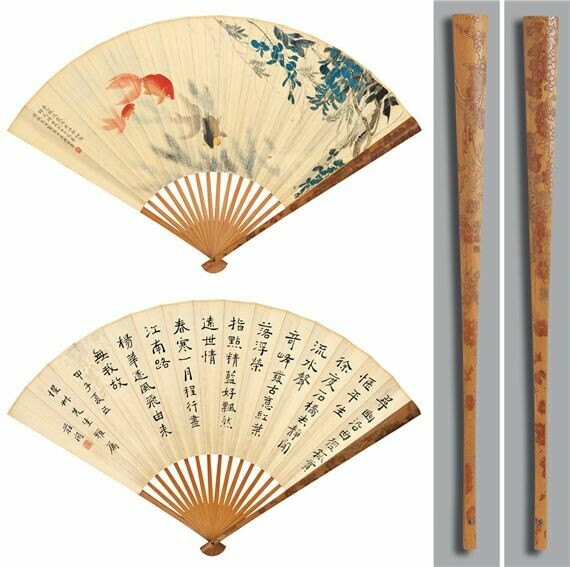
The cheapest cooling solution is definitely the good old-fashioned fan. That said, they can be as simple as a hand-held fan that you wave at yourself. Or, they can be as costly and involved as installing a large ceiling fan. Either way, they’re pretty ubiquitous around the world, especially in developing countries or where electricity is expensive.
Now contrary to popular belief, fans do absolutely nothing to cool down the air in a given space let alone a room or a home. In fact, a fan does nothing more than just move air so if you have hot air on one side of the fan, it’s merely blowing that hot air to the other side of the fan.
So why have a fan as a cooling option?
Well, fans are essentially de-humidifiers, which can work to evaporate moisture in the area that the fan blows towards. So when you sweat, if you stand by a fan or anything that blows air, then the sweat is likely to evaporate while taking some body heat along with the evaporating sweat.

This is why fans can be effective at cooling people even in humid tropical places where warm, humid air is inevitable without some kind of air conditioning, which is not always available or cost efficient.
In our home, we have ceiling fans in every room while we’ve used the smaller portable fans to blow where we don’t have a ceiling fan or where the ceiling fan can’t get to. Especially in the Summer or during any heat wave, we typically have these run all the time, and this is particularly true when we try to sleep throughout the night.
In addition to being inexpensive compared to other cooling solutions that we’ll discuss later, fans also don’t consume much electricity to run, which makes them inexpensive to operate. That’s why we don’t mind leaving fans on all the time on hot days. Of course, you can’t get any cheaper than waving a flat object or folded paper to act as a fan, which relies on only human power, and I’ve employed this when I’m on mass transit or I have to cool off while on the go.
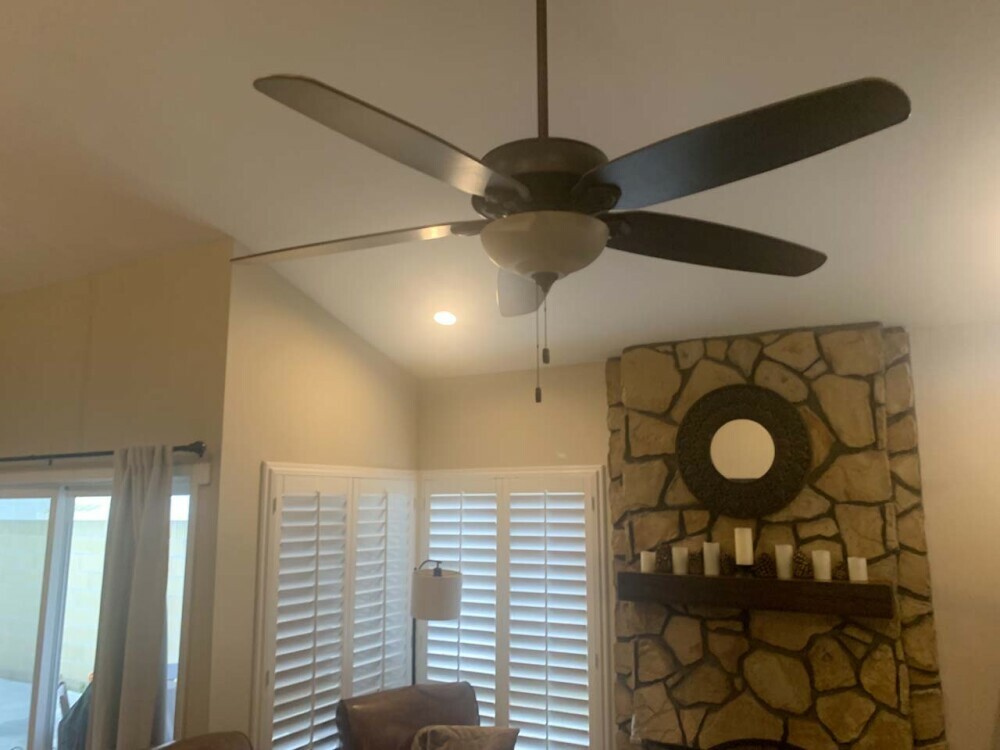
By the way, if biting bugs (e.g. mosquitos) are a problem, most of them aren’t strong enough to hover or fly against the wind caused by fans. Therefore, they can be a temporary bug deterrent until you move to a less breezier spot, where such insects could then take their shots at you.
In any case, for at least the first 10 years that I’ve lived on my own, fans (whatever form they took) were my only option before procuring active air conditioning solutions, which we’ll get to next.
Room Air-Conditioners or Room ACs
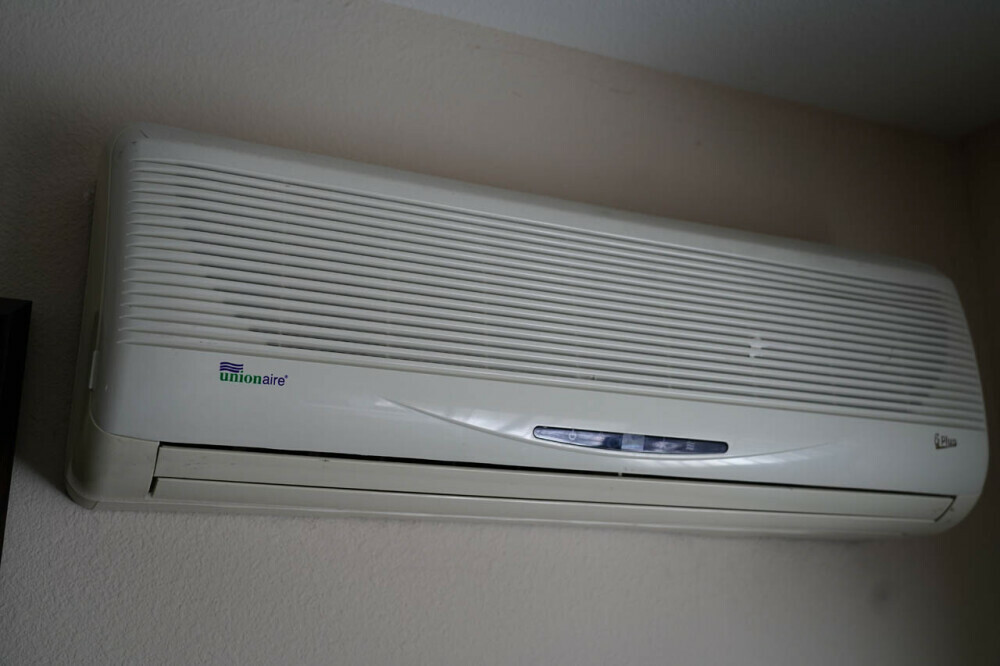
As the name suggests, room air conditioners provide cool air for the specific room that it occupies. To put it simply (perhaps oversimplified), these systems work like refrigerators. They take in warm air, apply power to both de-humidify and cool the air, blow that cool air to the desired location, and dispel the resultant air (typically humid and heated due to conservation of energy) elsewhere. The “elsewhere” is typically outside the home or out the backside of the refrigerator (depending on the application).
Within this class of air conditioning units, there’s quite a variety of them with varying degrees of installation complexity, unit cost, and operational cost. Such room AC types include portable ACs, window ACs, through-the-wall ACs, split wall-mounted ACs, packaged terminal ACs, and vertical package ACs, among others.
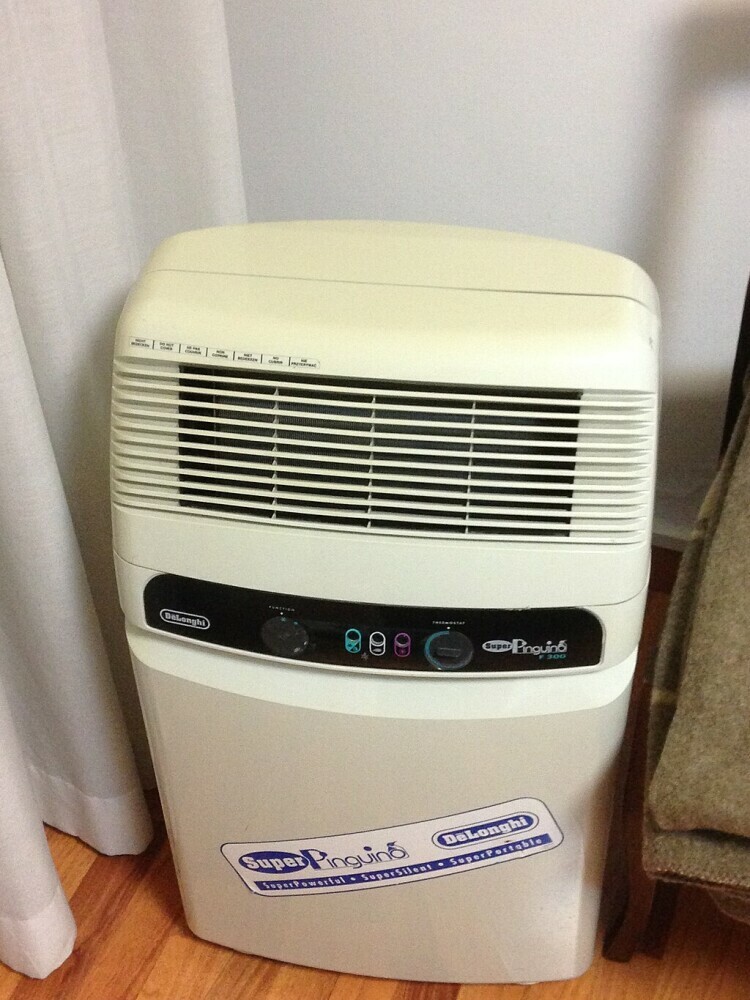
The most economical of the room ACs are the portable and window types. They’re especially handy if you happen to live in an apartment or some kind of temporary housing where tearing up walls and installing ducts aren’t an option.
On the opposite end of the flexibility spectrum are packaged terminal ACs and vertical package ACs. We typically find these in hotel rooms as they provide ventilation in addition to cooling. I think you see more of these in hotels or other corporate accommodations and office spaces because there are air quality regulations that have to be met while also being “easier” to buy in bulk and maintain. In any case, the installation complexity of these things (since they use ducts) is further underscored since they’re typically installed by licensed HVAC professionals.

Finally, we have the split system room air conditioner, which is basically a system that separates the cooling and de-humidifying function from the part that expels the heated and humidified air. Sometimes these systems are called a split wall-mounted room air conditioner since the cooling part of the unit is typically mounted on a wall while the heat exchanger is a detached unit located outside.
This is the type of system that we’re most familiar with since we’ve relied on this for years before finally installing a central air system (which we’ll discuss later). In fact, we’ve used it on our first home and then we brought it with us to our current home (along with the associated cost to do this move). Note that some wall- mounted systems are not split systems, where they act more like a window AC except the unit is through a wall instead of a window.
Anyways, we kept our split system room AC because it’s primarily used for the office (our warmest room), which houses a lot of equipment that radiate heat (e.g. multiple computers, printers, faxes, copiers, phones, chargers, etc.).

Anyways, our split system had a temperature control so we could set the desired temperature and the unit would remain on until reaching the desired temperature before going on standby. Then, it would go again once the measured temperatures rose above a certain threshold above the programmed temperature.
Unfortunately, we managed to lose that remote during our move, and our system had no way to manually program that operating temperature without it. Therefore, I have to manually turn it on and off as needed (which is a nuisance).
Nevertheless, as far as the cost of our room AC, we paid around $1200 to both procure and professionally install it in 2006. This doesn’t include the $1000 we paid to move it to our current home in 2017. And as far as operating the room AC, you can see in this graph that it definitely uses more electricity to operate compared to a fan. However, you’ll see later that room ACs have significantly less operational cost than the central air conditioning unit.
Central Cooling
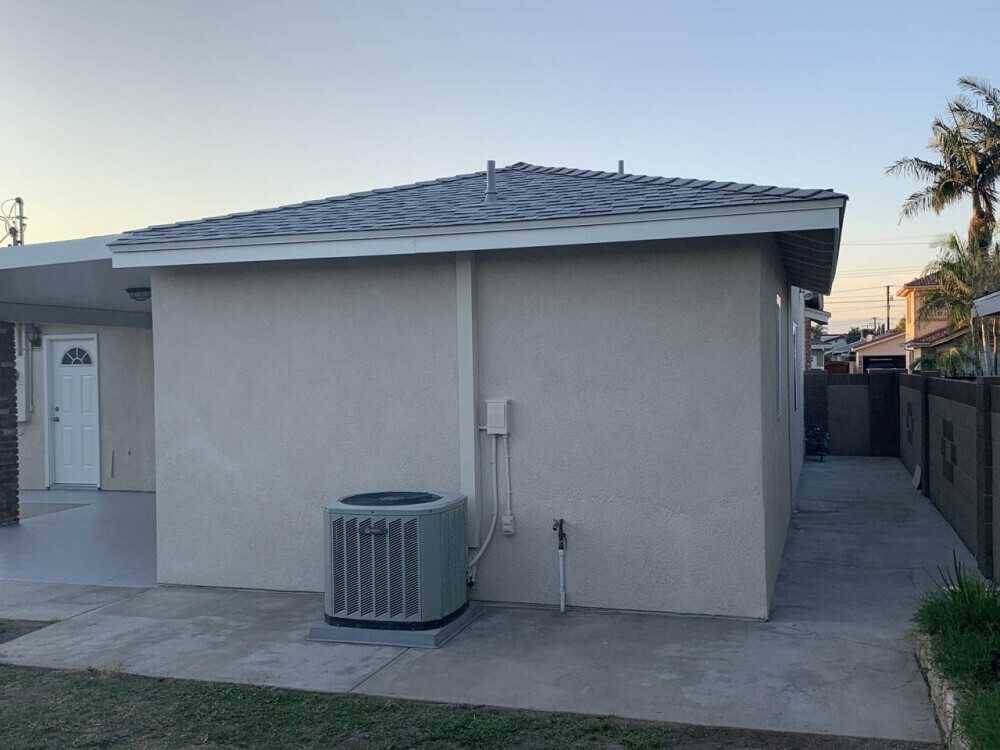
It’s generally not a good idea to try to cool more than one room with room air conditioning units as their energy efficiency tanks when trying to operate beyond what they’re intended to do. So if the desire is to cool the whole house or multiple rooms at a time, then that’s where central cooling comes in.
Central air conditioning systems are the most comprehensive solution for cooling your home. They’re ideal for reducing humidity and cooling large spaces evenly. However, central systems require a significant investment in both installation and operation costs. Maintenance is also key to keep them running efficiently and lasting a long time (hopefully at least 15 years or so).
Moreover, they spend a lot of electricity to run, which can really drive up electricity bills (e.g. electricity bills in the Summer are almost always significantly higher than electricity bills in the Winter). Thus, the operational costs in addition to the installation costs really add up, and that’s why not every home has Central Cooling.
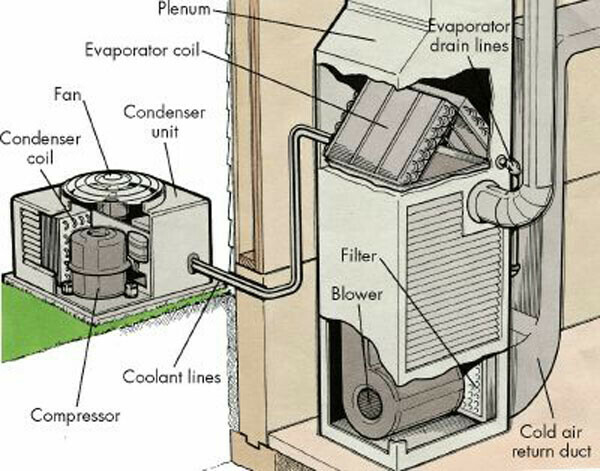
The principle behind how central cooling works is quite similar to how the room air conditioner works – they both use electricity to blow cooler, drier air to the desired location while expelling hotter, humid air elsewhere. However, with central cooling, there are more contraptions, coils, and ducts to convert and move higher volumes of air as compared to a room AC.
It’s these contraptions that require a fancy HVAC installation with their own breakers (due to the amount of power that they draw) and vents going to every room throughout the house. There also has to be at least one intake vent that must be large enough and not obstructed enough to input the air to be cooled throughout the house. Finally, the condenser that sits outside is a big boxy unit with a loud fan that’s likely to sit in the backyard (maybe to a side that doesn’t see much foot traffic).
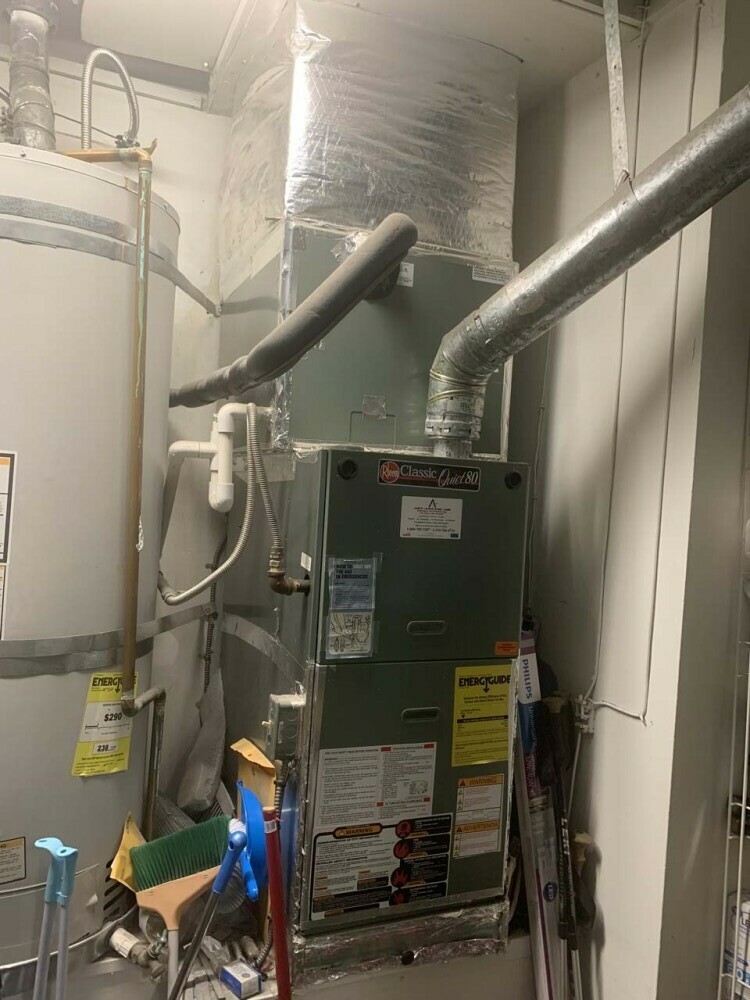
If we’re looking at figures for the installation and unit costs, we’ve paid about $6600 for both the procurement and installation in 2011. And while that’s a pretty hefty cost, there’s also the operational cost to consider. Depending on the electricity rates (SCE seems to keep jacking them up year over year), our Summer bills have gone from $50/month in 2004 to $97 in 2014 to $332 in 2020 (note: our Summer bill in 2021 maxed out at $126 and bills since March 2022 were credits due to having solar).
As for the energy consumption, in the following graph, we show how much energy is consumed (as well as produced). Without the AC running but keeping the fan on, the instantaneous power consumption more or less fits within the baseline consumption at around 0.8kW. With the room AC running, you can see that the instantaneous power consumption jumps by about 1.6kW to about 2.4kW. However, with the central cooling running, you can see that instantaneous power consumption skyrockets about 4.6kW above baseline to 5.4kW. Therefore, you can imagine how the electricity bills really add up when you run the electricity over several hours at that rate.
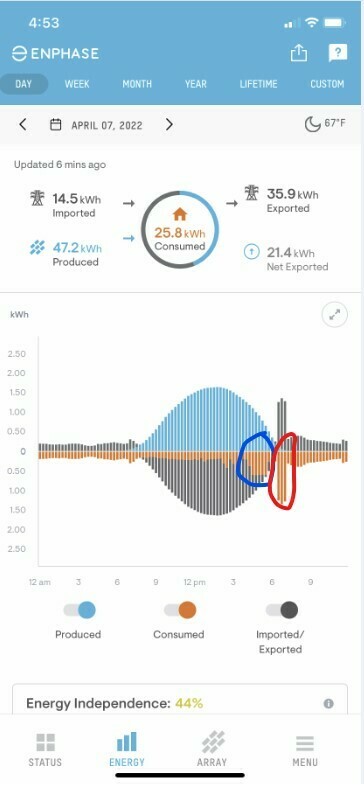
Speaking of electricity bills, note that the utilities charge you based on kilowatt-hours (kWh), which is defined as the volume of power consumption or area under the curve of instantaneous power over time, typically in hours. So if baseline power stayed at 0.8kW over the span of an hour, then we have consumed 0.8kWh. If we spent 2.4kW consistently over the span of an hour, then we have consumed 2.4kWh. And finally, if we spent 5.4kW consistently over the span of an hour, then we have consumed 5.4kWh.
In 2014, Southern California Edison’s Summer rates topped out at $0.12514 per kWh for generation and $0.18803 per kWh for generation. In 2020, SCE’s Summer rates topped out at $0.27373 per kWh for generation and $0.22185 per kWh for delivery. In 2023, SCE’s Summer rates topped out at $0.44620 per kWh for generation and $0.26534 per kWh for delivery. So imagine how much this adds up when you run your AC for several hours at a time (resulting in a consumption that could be upwards of 40kWh per day)!
Indeed, central cooling maybe the most robust solution, but it comes at a hefty price whereas the localized cooling via fans are cheaper but leaves a lot to be desired. Nevertheless, trying to beat the heat is only one aspect of keeping the home comfortable. Yet even in a world of Global Warming, we do experience extremes in the opposite direction, and that’s where the home also needs heating solutions when things get chilly…
Exploring Heating Options for Yourself and Your Space
If you encounter cold temperatures or chilly, wet weather, you’re going to need to keep yourself warm. So we’ll run through what options you have to accomplish this again ranging from economically cheap solutions to the more robust pricier ones.
Warm Clothes

Don’t laugh when I say this, but perhaps the cheapest way to stay warm (even when it’s chilly inside the home) is to wear warm clothes. I remembered there was a ridiculed fireside speech by President Jimmy Carter in the late 70s about energy conservation with him wearing a sweater asking every American to conserve energy to get through the energy crisis while trying to steer the country away from OPEC and fossil fuels.
Well, these days, with inflation up again and oil-related wars associated with Russia as well as the Middle East, there’s nothing funny about saving money this time around.
Think about it.
A well-made sweater or jacket is effective at trapping your own body heat so you remain comfortable (let alone functioning properly). This is also similar to how sleeping bags work when you go camping.

It’s cheap because you won’t run up your energy bills (both natural gas and electricity costs), and your warm clothes stay with you wherever you move about.
Before we went solar (and we were subject to temperatures below 60 F inside the home on many Winter days), we were quite frugal with energy use as we were conscientious of utility costs. So we resorted to wearing jackets, sweats, as well as wool socks indoors.
Sure, it might not have been the most chic way to remain comfortable in the home, but it worked for us at the time.
Space Heaters
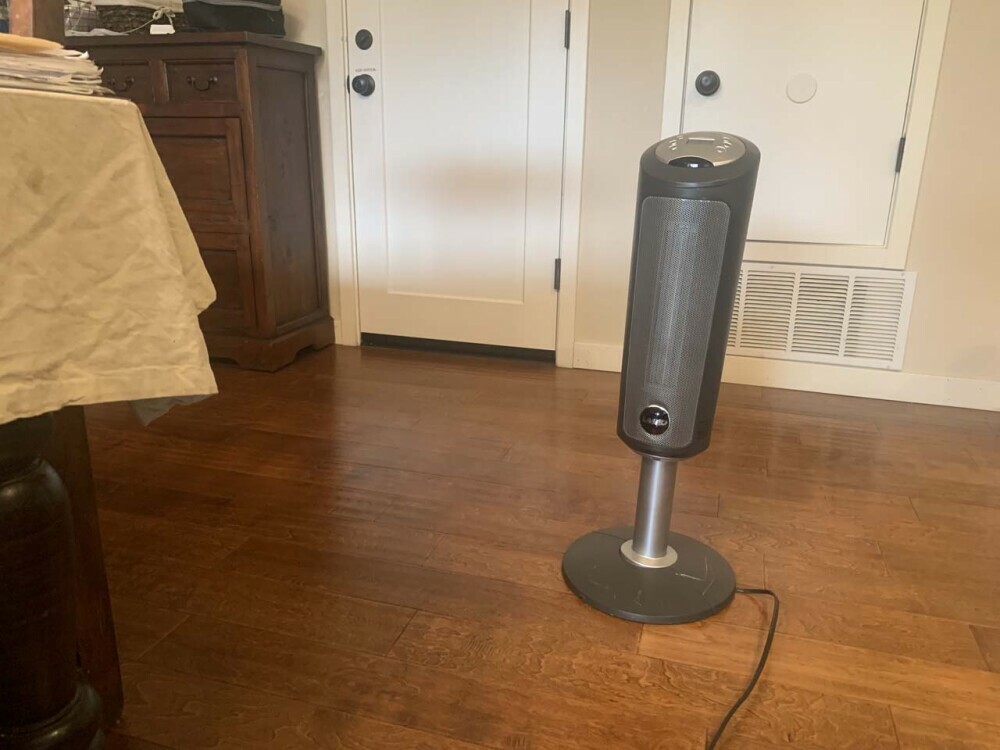
These are basically heating devices that are used to heat a particular space – whether it’s a personal space or as big as a particular room. There’s a wide variety of these units (probably too many to do this class of devices justice) each with pros and cons. A Wikipedia page talks about a few general classes of these devices, but they can primarily boil down to convective heating, radiant heating, or a combination of both. Moreover, space heaters can get their power from electricity or combustion (i.e. burning a fuel).
In our experiences, my wife and daughter have primarily used electric fan heaters placed next to themselves in the home. Especially in the case of our daughter, she would use it whenever it’s cold, but she’d run up our energy bills because she’d sit in front of the space heater in shorts and a T-shirt while the rest of the house is cold!
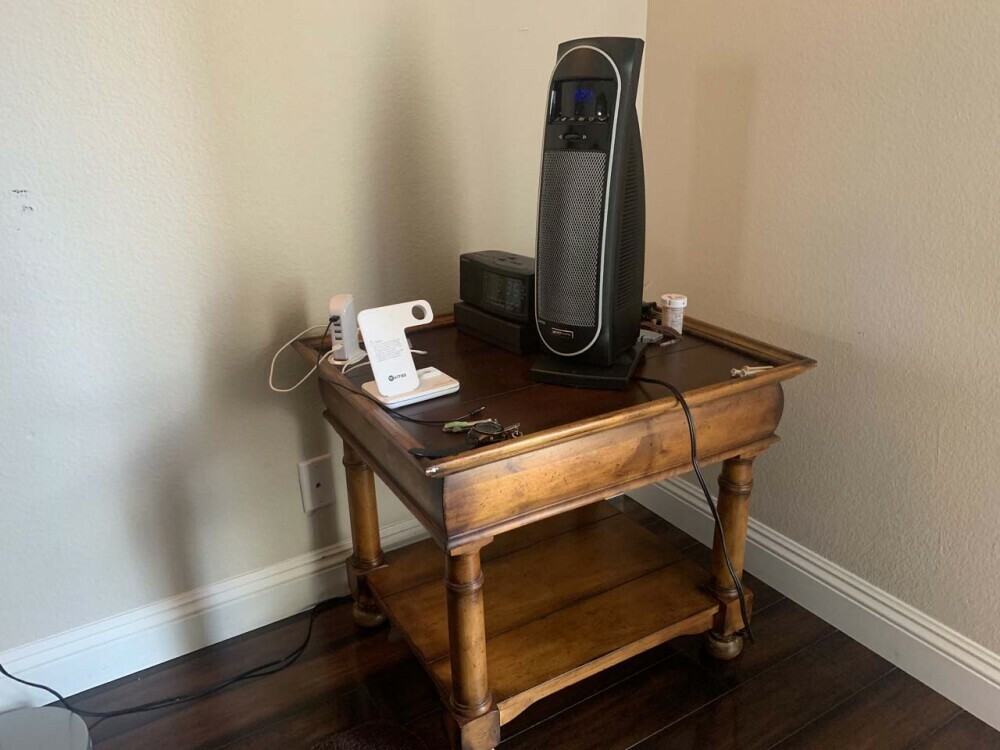
Considering she could have just worn warmer clothes, this was an absolute waste of energy and therefore money! And no matter how much we tried to stop her from doing that, she’d still smuggle a heater into her room and keep doing what she was doing! Just to give you an idea of how much instantaneous power the space heater needed, it jumped to 2.1kW from the baseline of 0.6kW (suggesting it took 1.5kW to power her space heater at that instant).
It goes without saying that the electric fan heaters are pretty affordable and portable, and if your home is not fitted with a good central air system or you don’t need to heat that much space, then this is a pretty economical solution.
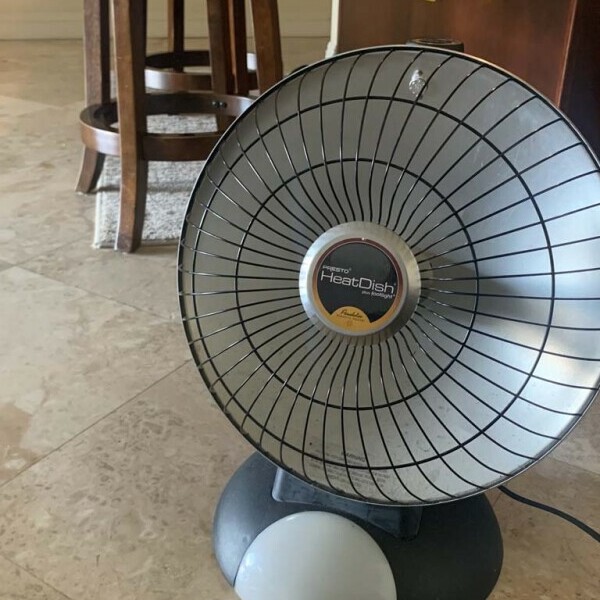
A similar but less portable kind of heater is an oil-based radiant heater, which is something we’ve seen in accommodations in cold weather places. They primarily heat up oil, which then naturally radiates through the entire room via convection and radiation.
We’ve also seen infrared heaters in restaurants that heat up outdoor spaces, which both provide ambient light as well as a good dose of warm air to offset the chilliness of the outdoors. That said, we generally don’t consider using these to warm the interior of a home.
Finally, it’s worth mentioning that space heaters do carry safety risks. In fact, according to the US Consumer Product Safety Commission, nearly 22,000 fires and 300 deaths every year are associated with space heaters. This can be because space heaters next to flammable materials (e.g. curtains, blankets, etc.) can cause fire while combustion heaters can elevate carbon monoxide levels. Some of these products are hot to the touch and can cause burns, which is especially a risk if children are around them.
Heat Pumps
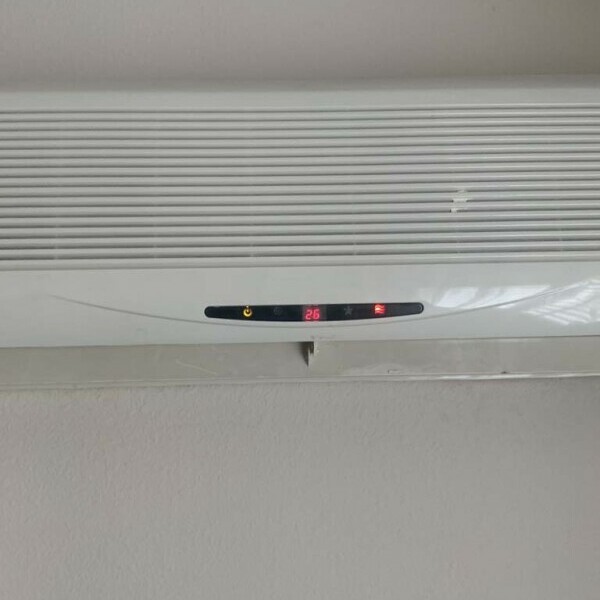
Heat pumps are essentially appliances that take cold air outside and use energy (typically electricity) to heat the air to be pumped inside the home. Although there are a variety of heat pumps (e.g. air source, geothermal, absorption, etc.), we’re primarily talking about the air source type here.
We used an air source heat pump on our first house when it didn’t have central air that was properly functioning. We actually still have this unit heating the office in our current home, especially since it’s the same device as the room air conditioner!
In fact, that’s the appeal of this type of heat pump as you get both air conditioning and heating in the same unit. Therefore, it’s both economical and energy-efficient, especially since the installation is minimal for a permanent solution in the home. Just to give you an idea of the energy consumption when the heat pump was on, our instantaneous power consumption jumped to 1.7kW over a 0.8kW baseline (suggesting that it drew about 0.9kW in instantaneous power).
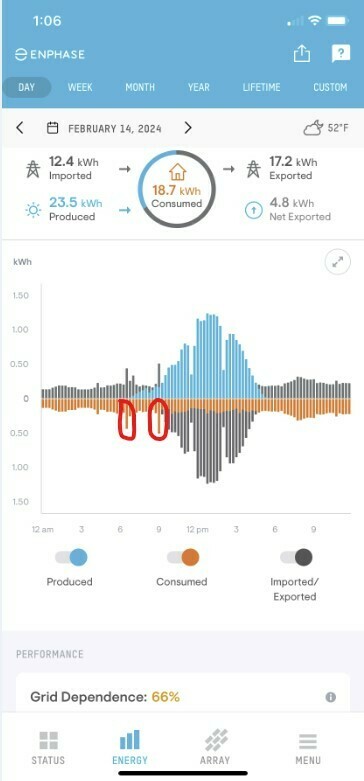
The way heat pumps work is essentially the reverse of a room air conditioner. It takes cold air from the outside, applies electricity to heat up that air and pump it into the desired room, and dumps the colder air elsewhere (typically back outside).
Since our room AC and heat pump combo is a wall-mounted split unit, the air intake (which acts as the compressor and exhaust when in AC mode) is outside while the unit that pumps in the heated air is mounted on our room’s wall. It’s also possible to have wall mounted units where the indoor and outdoor components are on either side of the wall in the same unit.
We put the heat pump in our office though I have rarely used this unit for heating purposes since the office also happens to be the warmest room in the house. That said, ever since we’ve gone solar, it’s way cheaper to warm up the office using this device instead of using the central air to heat the house using a furnace to burn natural gas. And speaking of central air…
Central Heating
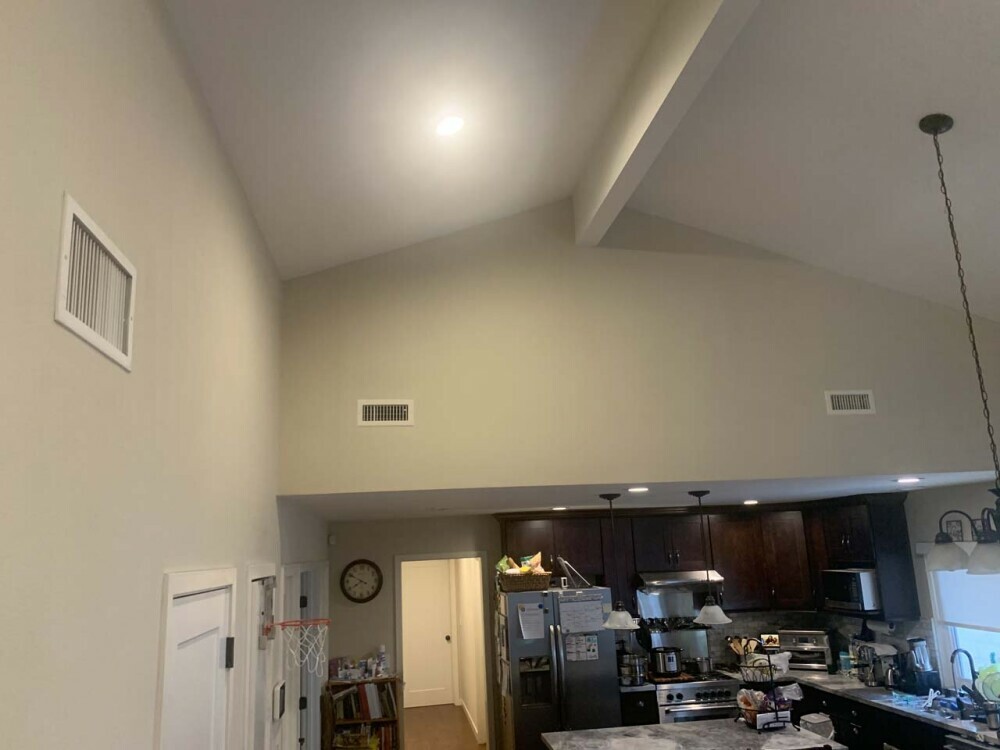
By the same analogy as that of the central cooling, if you have a desire to heat more than one room (e.g. the whole house), then you will need some sort of central heating system. After all, the aforementioned single-room heat pump will be both insufficient and inefficient about producing and pumping that much volume of heated air.
And like with central cooling, this system involves ducts to carry the air, vents going to each room, a heat source (typically a furnace burning natural gas), and maybe a thermostat controlling the HVAC unit governing how often and for how long to burn the gas. Therefore, procuring and installing such a system can be a substantial upfront investment.
In our case, when we lived in our first home, we had to install one because it didn’t exist or it was non-functioning. Fortunately, our HVAC installation involved both central heating and central cooling so our procurement and install cost was about the aforementioned cost of $6600 in 2011. That system is currently being enjoyed by tenants as that home has been rented out.
As for our current home, we have an existing (albeit aging) central air system. At some point, it will probably need to get replaced, but thus far, both its heating and cooling functions seem to work just fine (though we tend to limit our heating use opting for space heaters instead).
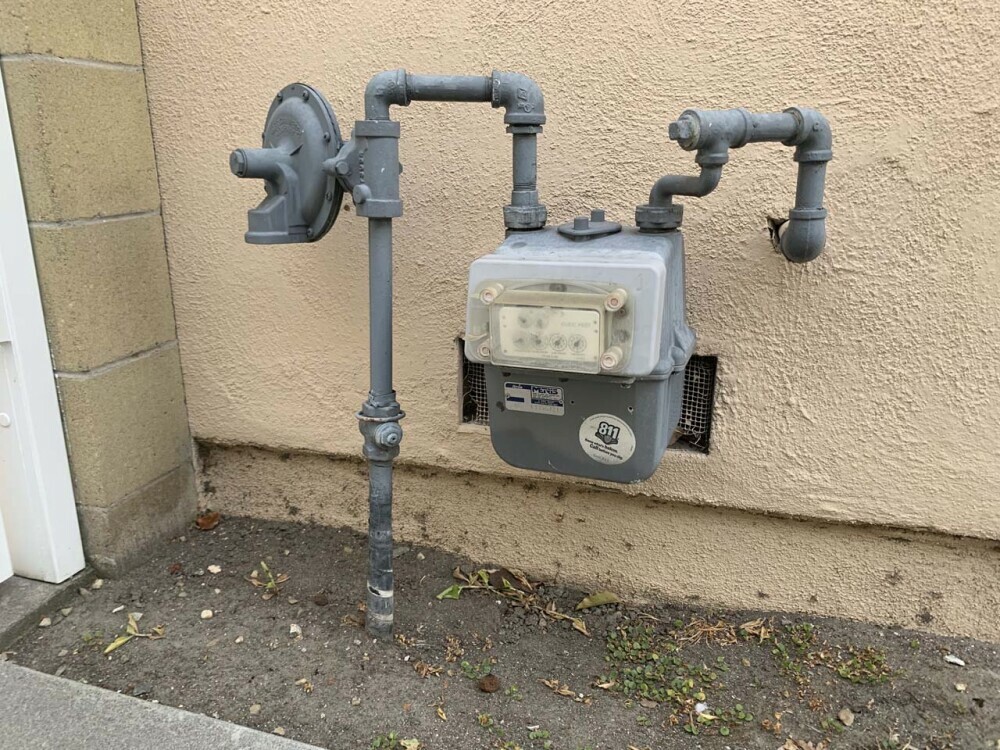
Unlike with central cooling, the primary energy source for the heating is the furnace combusting natural gas so the utility costs are driven primarily by the cost of procurement and delivery of the natural gas. This can spike (as it had in Winter 2023 when the cost had doubled over the same period the previous year), and we can expect such costs to continue to increase over time.
Although we seldom use central heating in our home, even in a Global Warming world, it doesn’t necessarily mean that we can do without it. In fact, climate extremes (including cold) are surprisingly becoming more likely, and it’s just another reason why a home needs to regulate against these extremes when needed. The central heating system is essentially our last-resort at providing this heat when space heaters aren’t really doing the job anymore.
Finally, safety should be a non-negotiable consideration with any heating system, especially for central heating since it does involve combusting natural gas. So we ensured proper installation by certified professionals and making sure the air filters are replaced periodically. That said, I’m sure we could do with more regular maintenance checks and adherence to safety guidelines to prevent fire risks and carbon monoxide poisoning though truthfully, the vast majority of homeowners don’t do this.
Other Considerations for Year-Round Comfort
In addition to using energy to pump cold air or hot air into the home, there are other (often overlooked) aspects of temperature and humidity regulation to consider. These investments can also save significant chunks of money to the homeowner over the long run.
Insulation

Regardless of whether we heat the home in Winter or cool down the home in Summer, insulation (including weather stripping) is one way we can retain the desired temperature longer before burning more natural gas for heat or spending more electricity to run that AC.
One measure that we took before we moved into our current home in 2014 was to put insulation between the walls and in the attic. The cost of installing this insulation was about $11,000, which made our $500 energy tax credit seem like small potatoes at the time.
Nevertheless, we did notice that prior to the insulation being installed, I saw the thermometer reading in the home overnight got as low as 52F. However, ever since insulation, the overnight readings rarely went below 60F (though some of that could be that we were inhabiting the home and contributing our 98.6F whenever we exhale).
Conversely, when we turn on the AC, we noticed that the house remains cooler for longer even though the AC reached its stop temperature (which we tend to put at around 80F in the Summer if we have the central air turned on). That means less electricity is used to run the power hungry HVAC. On our first home, the lack of insulation (or the severe aging of it) meant that the home noticeably leaked more air and required the central cooling to turn on more often.
The bottom line was that putting insulation into the home did have an effect, and it’s always working since it’s passive. In other words, once it’s installed, you don’t need to spend more energy to get its benefits.
Doors and Windows
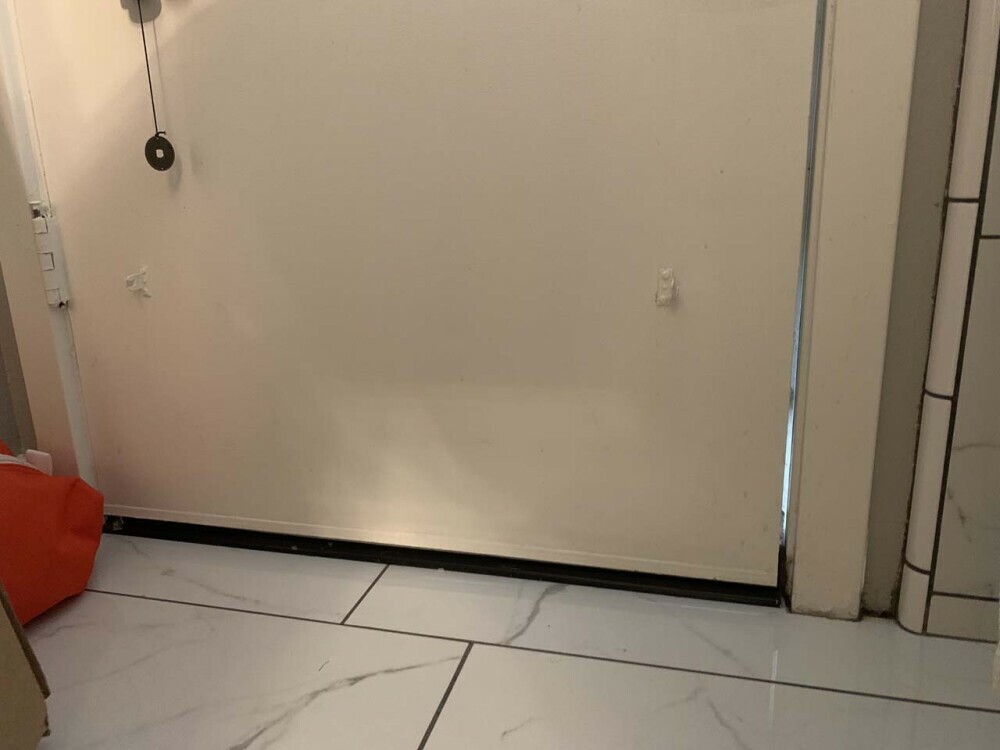
Some of the draftiest parts of the house involves the door, where gaps between the closed door and its frame can leak out air. This leakage can even undermine the efforts we made to insulate the house (even causing us to question the expense of adding insulation to the home).
To defend against this, we put weather stripping on the door to seal up those gaps. And when we didn’t put in the weather stripping yet or the weather stripping was worn, then we managed to put an old towel or foam to cover up the gap when the door is closed. Once we did this, the front door stopped becoming drafty, and the only leaky part left in the living room (the coldest room in the house) was the chimney.
The other cold parts of the house tend to be the bathrooms. The larger bathroom has a back door, and even with weather stripping, some warm air can leak through. That kind of gives you an idea of how you have to live with some degree of leakage, but you can always take measures to minimize that leakage and save some energy.
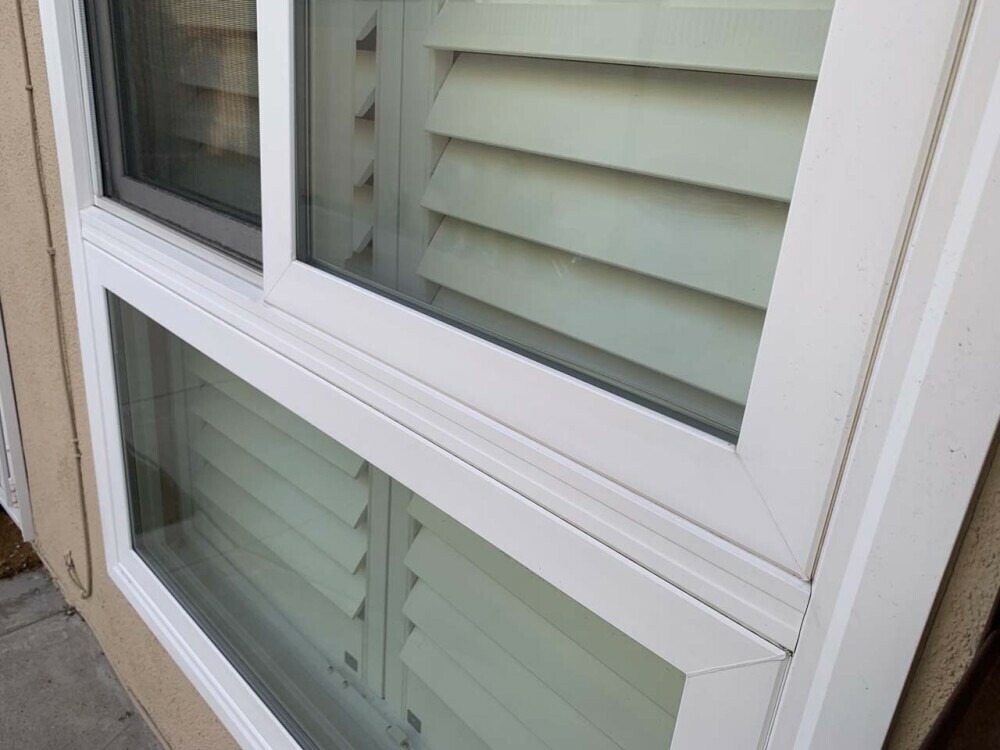
The same can be said in the hot Summer months, where the weather stripping can help to maintain the cool air and not let it escape after the AC has been turned on.
In addition to doors, windows can definitely be a key leakage contributor. We noticed this firsthand on our first home when our windows were single-paned and aging. The temperatures would routinely be 56F or lower in that house until we finally spent the $2500 to put in double-paned windows and sliding doors (for the backyard).
Only then did the windows stop becoming so drafty. Thus, it was a no-brainer for us to do the same thing with our current home prior to moving in. In fact, once you start putting in double-paned windows and have it professionally installed, there was no looking back. Now, we can literally see and feel the difference whenever we show up to an accommodation while traveling abroad (typically the mom-and-pop ones) or visiting a friend’s place where they haven’t made the move to upgrade their windows.
Roofing
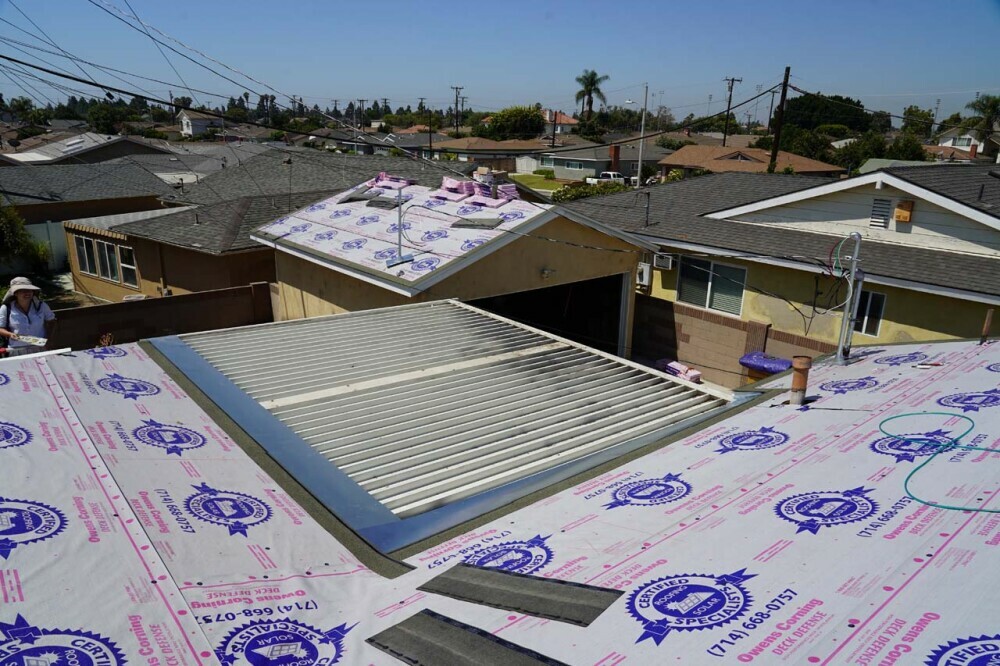
Finally, another consideration that we made to ensure the home is as thermally comfortable as possible was our roofing solution. Granted, this is perhaps one of the costlier measures to take when it comes to fixing up a home, but it’s often one of the most critical moves to make at staving off what Mother Nature can throw at you.
In our particular case, we saw that there was termite damage around the house, and when we investigated further, we realized that the roof wasn’t properly done. As you can imagine, such shortcomings resulted in roof leaks, which led to an assortment of calamities and complications. So when we finally made the move to re-roof the house, we realized that a combination of a reflective roof along with proper air circulation in the home were very important at staving off mold and mildew build-up while also allowing the home to passively cool itself off.
A reflective roof is pretty self-explanatory. As far as asphalt shingles are concerned (i.e. the ones that we use), the lighter the color of the roof, the less heat is absorbed and the less hotter the attic becomes. In fact, the city requires the roof to have a minimum standard of reflectivity in order for a roofing project to be approved for this very reason. Of course, having traveled to Europe and even seeing Spanish-style buildings in California, we also see how effective clay-tiled roofs can be at keeping buildings cool passively. So roofing materials are another way to passively combat hot temperatures.
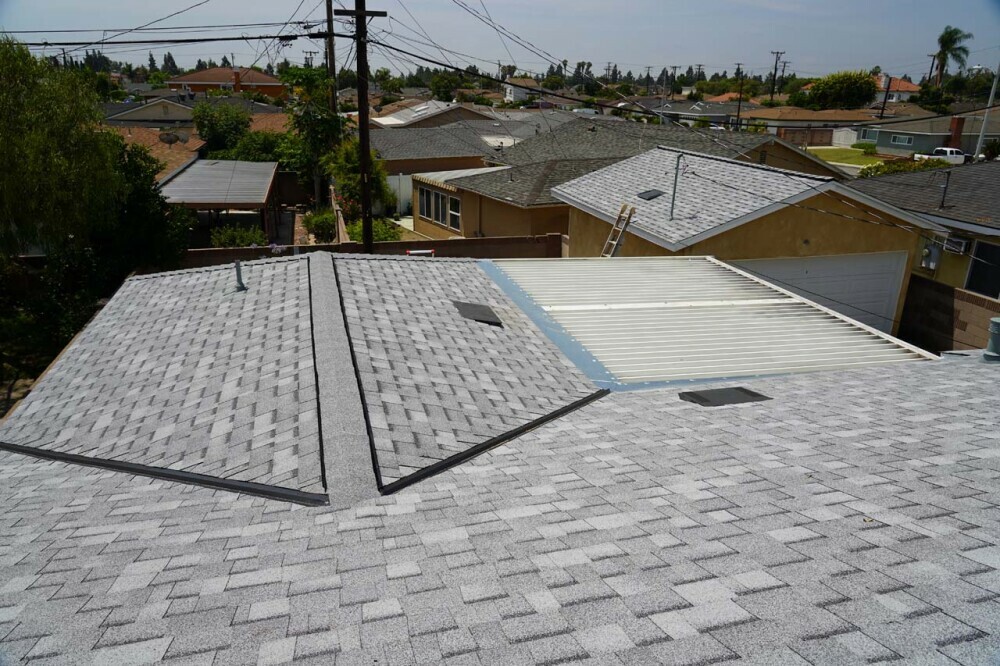
As far as air circulation is concerned, the principle behind this is that hot air naturally rises while cool air naturally sinks. An air circulation pattern called convection develops when you have this temperature disparity. So when hot air rises, it needs to have a place to go, and if that air gets trapped in an attic or some other roofing enclosure with nowhere to go, then you end up with hot, stale air. This is why you have attic vents with turbines in some roofs while we’ve gone with a combination of ridge vents and O’Hagin vents for our shingle roofs.
While it seems like an oxymoron to insulate and maintain air circulation at the same time, you also can’t let the air go stale and sit in your attic. In fact, if there’s so much build-up of hot air in the attic, it will eventually radiate through the walls back into the living parts of the house!
This explained why the house became the hottest when the Summer sun went down, and all that pent-up heat energy in the attic permeated our living spaces and made it over 90F inside the house without the AC being turned on (at peak energy hours, too)!
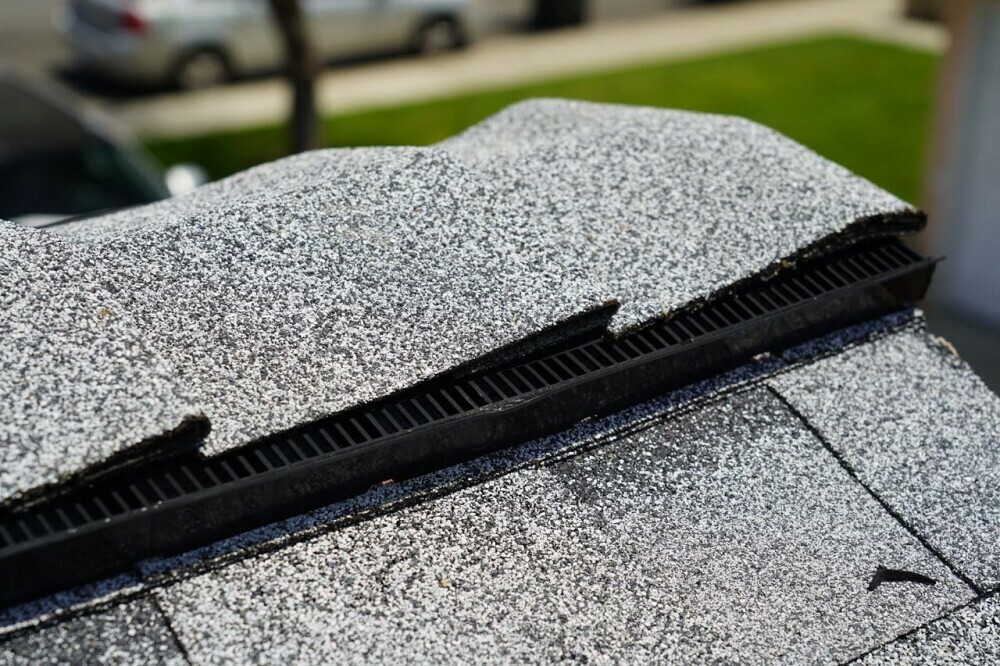
Now even though we have built-in proper attic circulation through best roofing practices, the difference is most noticeable if you go into the attic. It tends to be upwards of 20F hotter in the attic than in the living spaces underneath in the Summer, and it’s still pretty hot up there even with the ridge and O’Hagin vents, but at least it’s closer to 10F or so hotter up there than before.
Moreover, the heat radiation after the sun goes down now makes a lesser contribution of radiation heat coming from the attic. However, there’s still the heat radiation from the stored energy in the ground going up through the concrete foundation and into the home. Without an exotic re-build to allow for air circulation beneath the home to defend against that kind of ground-stored radiation, it’s just something we have to live with. Thus, the sunset temperatures inside the home without central air can still be in the high 80s and low 90s though not as consistently as if those measures weren’t in there to begin with!
Behavioral Considerations
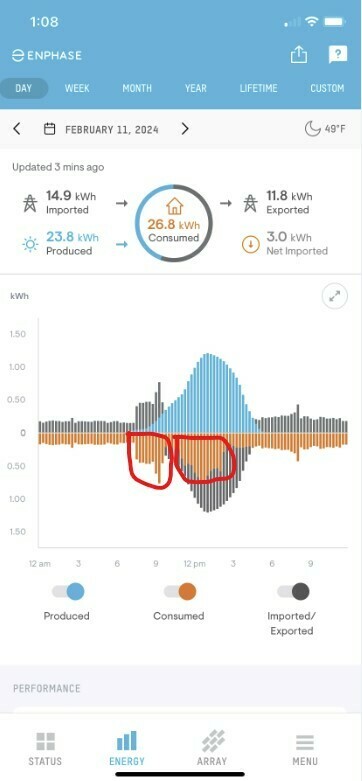
So given our personal experiences that we’ve shared in this article, you can see how the ongoing costs tied to energy consumption can really impact the comfort versus cost equation as far as homeownership is concerned. Therefore, we can take certain behavioral measures to cut our energy costs.
For example, smart usage habits, like shutting off units when not at home, setting higher temperatures overnight in the Summer (assuming we don’t turn it off), or wearing warm clothes in the Winter can contribute to cost savings.
A lot comes down to the day-to-day choices that are made. As mentioned earlier, my daughter chose to be wasteful by sitting in front of a space heater in T-shirts and shorts in the Winter, which forced us to spend more in energy costs than expected. We even have neighbors who keep their AC running all the time (even throughout the night), which makes me wonder how much their energy bills are.
Indeed, it’s often said that the cheapest energy is the one that’s not being used. So making behavioral changes to not have to use energy more than you have to is by far the most effective way of saving on your energy costs (as well as having less impact on the environment).
Conclusion

Achieving a comfortable home environment throughout the changing seasons isn’t just about having the right equipment. It involves a blend of technology, smart habits, and intelligent home design. Insulating and weatherizing your home, for example, can significantly reduce the burden on your heating and cooling systems. Some of the latest systems offer thermostats and smart home systems to tailor your heating and cooling needs according to your schedule and preferences.
In summary, even with environmental costs externalized in our current (and perverse) pricing schemes worldwide (often encouraging us to pollute more because it’s more expensive not to), you can’t ignore the proportional relationship between comfort and cost. As you can see from this article, it’s often the less fancy, more passive and portable solutions that are cheaper and can do the job, but you have to live with the shortcomings. Of course, a home isn’t truly a home without creature comforts, which requires a lot of upfront investment and ongoing operational costs.
So what is that comfort vs. cost equation for you?

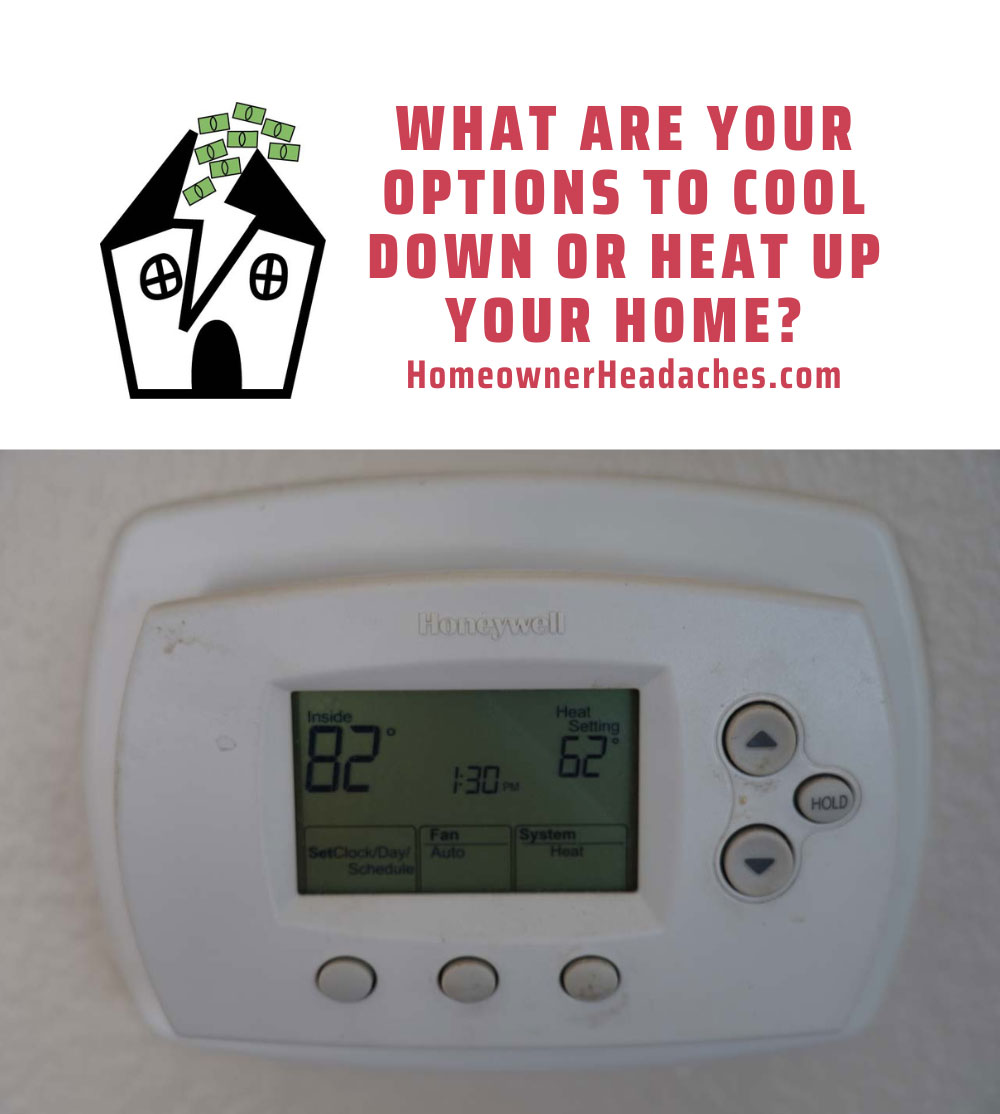
With so many unique options to cool and heat your homes in today’s times it feels like it comes down to almost one thing and that’s affordability. We can all afford different ways and means when it comes to our much needed heat and air. As someone in Texas I couldn’t imaging going without the AC while I know my friends in the North have no issues not having it at all. This is interesting stuff, thanks for putting it out there and I hope to see more soon!!
Indeed. Everyone’s got different needs and means. You’ll definitely have to budget all that when trading what you can afford versus what you must have or want.
Hello Johnny,
I hope this message finds you well. I just finished reading your piece, “The Best Options On How To Cool Down Or Heat Your Home – Homeowner Headaches,” and I must say, it was a breath of fresh air.
Your comprehensive breakdown of the various heating and cooling options available to homeowners was both enlightening and practical. I particularly appreciated your emphasis on the importance of a home’s ability to shield us from the varying conditions of nature, especially in these times of increasing climate extremes.
Your discussion on fans reminded me of my own experiences growing up. We didn’t have air conditioning in our home, so we relied heavily on fans to keep us cool during the hot summer months. I can attest to their effectiveness as dehumidifiers, evaporating sweat and cooling the body.
I also found your section on heating options to be very informative. Your mention of the simple act of wearing warm clothes brought a smile to my face. It’s a reminder that sometimes the simplest solutions are the most effective.
Your piece also got me thinking about the importance of insulation and weather stripping. I remember when we first moved into our current home, we noticed a significant difference in our heating and cooling costs after we had the house properly insulated and weather-stripped.
In conclusion, your article was a great read, filled with practical advice and useful information. It’s clear that achieving a comfortable home environment involves a blend of technology, smart habits, and intelligent home design. And as you rightly pointed out, there’s a proportional relationship between comfort and cost.
Keep up the good work, Johnny. Your insights are making homeownership less of a headache for many of us.
Best regards,
Eric
Hi Eric,
Thanks for the comment and appreciate your personal experiences with heating and cooling. It definitely helps to be proactive and practical about sheltering from what Nature throws at us in a way that’s cost effective. I know my parents did a lot with less, and as things get more advanced and complicated, we definitely can’t lose sight of the simple solutions that’s right in front of us.
-Johnny